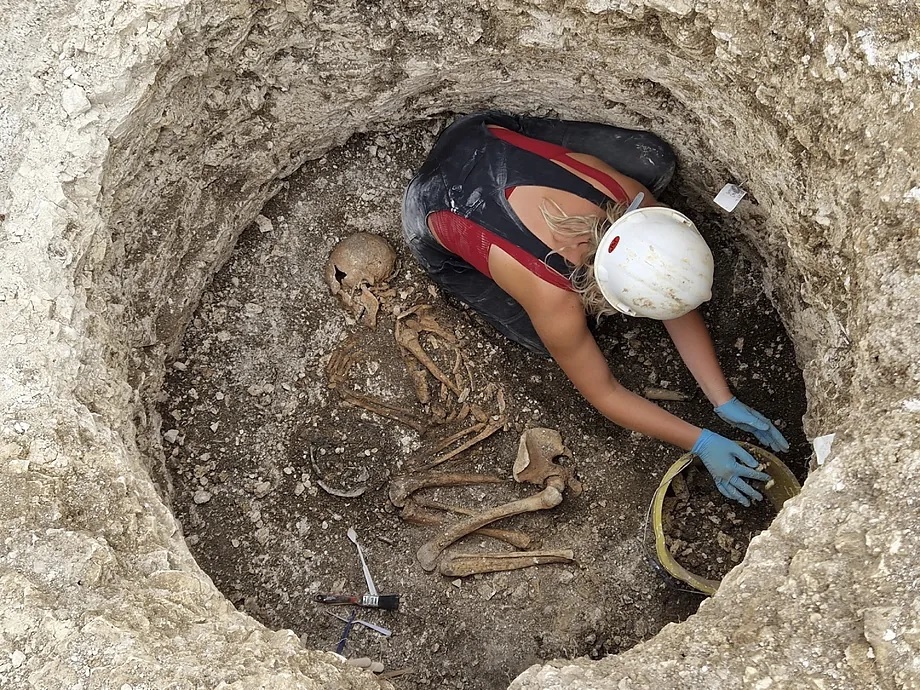Genetic analysis of human remains found in archaeological sites is revolutionizing the understanding of ancient societies. In addition to the information traditionally obtained through the study of objects, tools, animal remains, and the bodies themselves, there is now the possibility of understanding the parental relationships within a community. This has now led to the discovery that in the territory that is now southern England, during the Iron Age, there was a society centered on women, rather than men, as was assumed to be the norm.
This international study, in which geneticists and archaeologists worked together, is based on the analysis of 50 ancient genomes from a community and is published this Wednesday in the journal Nature.
The study identifies a matrilocal society, where land was inherited through the maternal line and where men moved to their wives' community, instead of the wives moving to their husbands' places of origin. While it was common to find communities where women were the ones who moved, in this settlement, they remained in their places of origin, indicating that they were the landowners and held prestige and power, according to the authors.
As Lara Cassidy, a professor at Trinity College and leader of the study, explains, in one of the cemeteries, a large number of related individuals were buried: "We reconstructed a family tree with many different branches and discovered that in most members, their maternal lineage traced back to a single woman, who would have lived centuries earlier. In contrast, relationships through the paternal line were almost non-existent," she details in a statement. Her conclusion is that "husbands moved to join their wives' communities upon marriage, and potentially, land was transmitted through the female line."
The fifty genomes analyzed come from various burials in Dorset, southern England, used before and after the Roman conquest of Britain in 43 AD. Specifically, DNA samples were taken from a site near Winterborne Kingston, nicknamed "Duropolis," which archaeologists from Bournemouth University have been excavating since 2009. Previously, they had observed that women's graves were more richly ornamented. One of the burials analyzed for this study belonged to a young woman, who was buried with a mirror and jewelry.
Burial of a young woman from whom DNA was extracted for this study. She was buried with a mirror and jewelry, including an amulet with a Roman coinBournemouth University
Funerary practices during the Iron Age, where cremations were common but also exposure of bodies outdoors, did not favor good preservation of human remains for DNA analysis. Dorset is an exception due to the burial customs of the Durotriges, one of the tribes that lived in southern Britain before the Roman invasion.
Despite these limitations, researchers believe that this type of social organization where women were the main figures was not restricted to the area that is now Dorset. Upon reviewing previous genetic studies of Iron Age Britain, they detected the same pattern, although the number of samples was smaller: "Throughout Britain, we saw cemeteries where the majority of individuals descended maternally from a small set of female ancestors. In Yorkshire, for example, a dominant matrilineal line had been established before 400 BC. To our surprise, this was a widespread phenomenon deeply rooted on the island," explains study co-author Dan Bradley, Professor of Population Genetics at Trinity College.
While the researchers claim that this is the first time that a social system of this nature has been documented in prehistoric Europe, there have been occasional findings of social and political empowerment of women in the Bronze Age, as Marina Lozano, a researcher at IPHES-CERCA and associate professor at the Rovira i Virgili University of Tarragona (URV), recalls. In statements to the Science Media Centre (SMC), she mentions "the case of a female burial at La Almoloya (in the town of Pliego, Murcia) from the El Argar culture, where the woman buried in tomb 38 seems to have had a high social and possibly political status."
As Miles Russell, excavation director and study co-author, points out, "beyond archaeology, most of the knowledge about Iron Age Britain comes mainly from Greek and Roman writers, but they are not always considered the most reliable. That said, their comments on British women are noteworthy in light of these findings. When the Romans arrived [in Britain], they were surprised to find women in positions of power. Two of the first recorded rulers were queens (Bouda and Cartimandua) who commanded armies." Now, he adds, the combination of archaeology with genetics reveals that women had influence in many spheres of Iron Age life.
